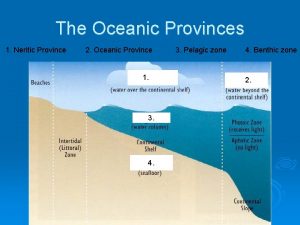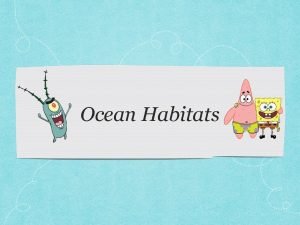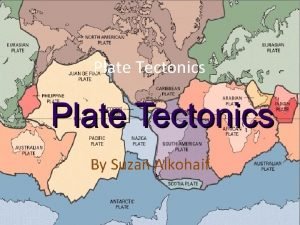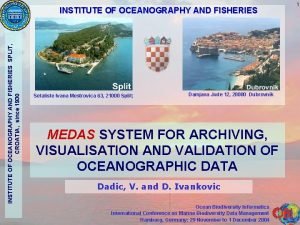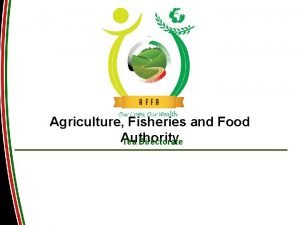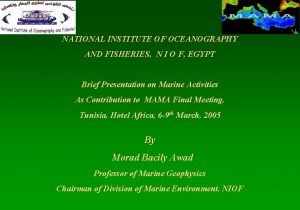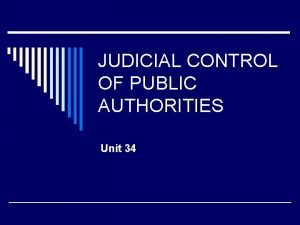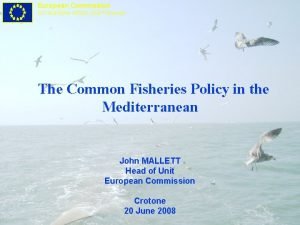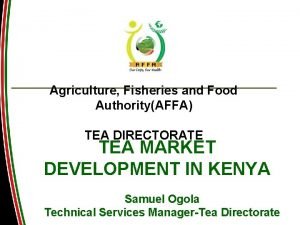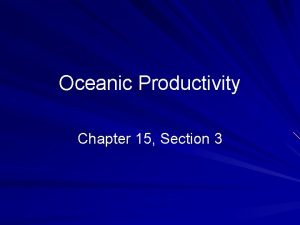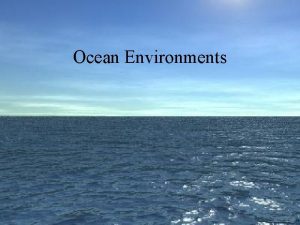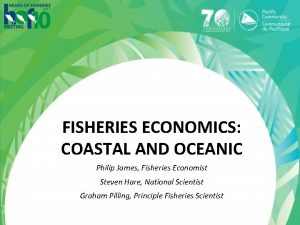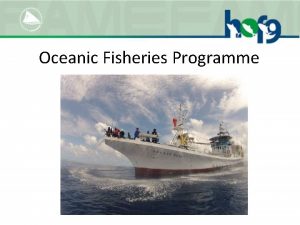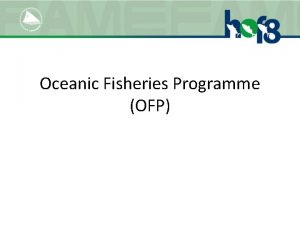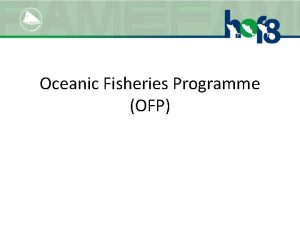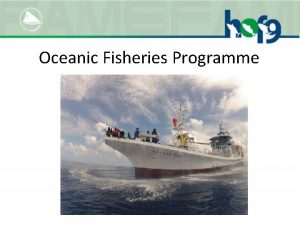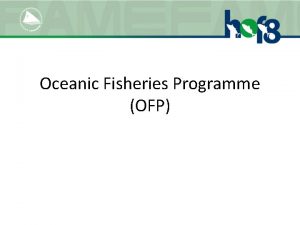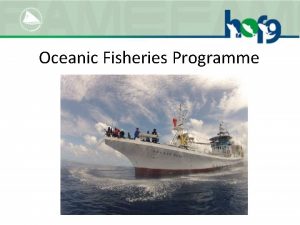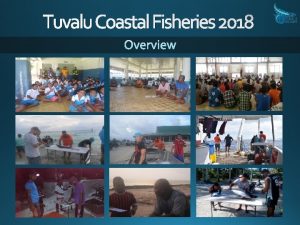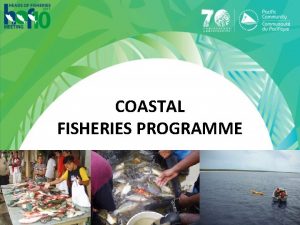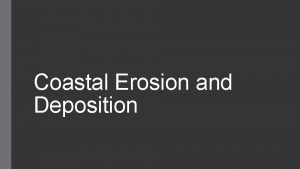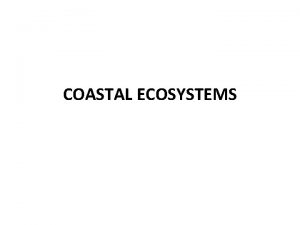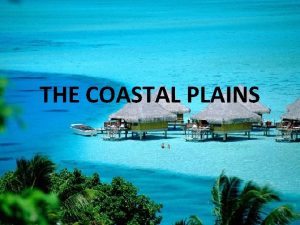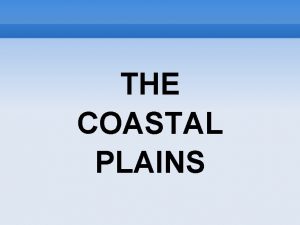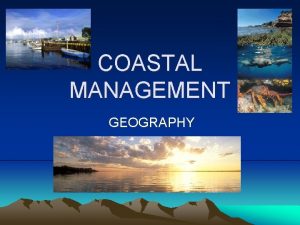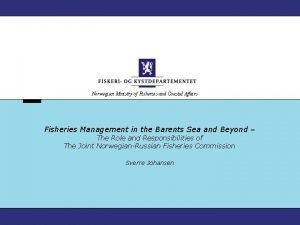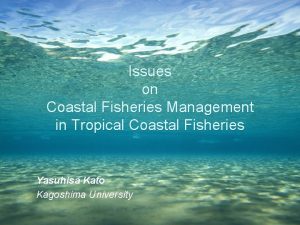FISHERIES ECONOMICS COASTAL AND OCEANIC Philip James Fisheries




















- Slides: 20

FISHERIES ECONOMICS: COASTAL AND OCEANIC Philip James, Fisheries Economist Steven Hare, National Scientist Graham Pilling, Principle Fisheries Scientist

Background • Pressure on resources increase, economic analysis becomes increasingly important. • Not financial analysis • Utilised throughout the policy and project life cycle: – Design – Implementation – Evaluation • Analysis is critical to fully understanding the implications and impact of policy decisions

Case study 1: Deep water snapper bioeconomic modelling • Work on DWS endorsed at Ho. F 9 • Effort multiplier based bioeconomic model • Used to advise on proposed management plan: – Management measures – Fishery sustainability, – Efficient regulatory regime, – Other government objectives (e. g. employment, food security) Delivered under a project managed by NIWA and funded by NZ Aid Programme

Case study 1: Bioeconomic modelling Total catch of the deep water fishery per year 200000 Catch (Kg) 150000 100000 50000 0 1 2 3 4 5 6 7 8 9 10 11 12 13 14 15 16 17 18 19 20 21 22 23 24 25 26 27 28 29 30 Number of Vessels Fleet Total Catch TAC

Case study 1: Bioeconomic modelling Fleet profitability over time $ 800, 000. 00 $ 600, 000. 00 Fleet profits (USD) $ 400, 000. 00 $ 200, 000. 00 $1 2 3 4 5 6 7 8 9 $ (200, 000. 00) 10 11 12 13 14 15 Number of Vessels $ (400, 000. 00) $ (600, 000. 00) $ (800, 000. 00) $ (1, 000. 00) 3 Years 5 Years 10 Years 16 17 18 19 20 21 22 23 24 25

Case study 1: Bioeconomic modelling Impact of a total allowable catch limit on fleet profits and vessel numbers $1, 000 $800, 000 Fleet profits over 10 years $600, 000 $400, 000 $200, 000 $0 -$200, 000 1 2 3 4 5 6 7 8 9 10 11 12 13 14 15 16 Number of Vessels -$400, 000 -$600, 000 -$800, 000 -$1, 000 Fleet Profit With Management Fleet Profit Without Management 17 18 19 20

Case study 2: Interactions between artisanal fishers and industrial vessels • Ho. F 7 requested SPC investigate interactions between artisanal and industrial fisheries. • Most analysis has been on the stock effects. • A different approach: “how does the presence of the industrial fishery impact the artisanal fishers willingness to go fishing” Work jointly developed by CFP Economist and Alex Tidd

Case study 2: Interactions

Case study 2: Interactions • Implications are significant, over the period of analysis we estimated: – 2, 200 artisanal fishing days were lost – Over 5, 000 lost days of employment – 676 tons of fish were not landed by artisanal vessels, equivalent to yearly consumption of 11, 500 people – USD 2. 7 m in revenue to artisanal fishers lost

Case study 2: Interactions • Implications are significant, however comparison to industrial data: – Over 5, 000 lost days of employment but we estimate that transshipping brought at least twice this amount of employment. – The ‘lost catch’ is close to or slightly greater than off loads. – Revenue – SI earn $27 m from license fees, Tuvalu 85% of government revenue is from license fees and Marshall Islands $17 m is for access rights in 2014 (Gillett 2016) • This is not to say that there is not a problem but there is some substitution of the losses in the artisanal by the industrial fishery. • The issue is therefore one of distribution and therefore of government policy.

Case study 3: Cost benefit analysis: Using UBA to harvest sea cucumber in Fiji Average cost/benefit per year $ 5, 000 $ 4, 000 Cost/Benefit (FJD) $ 3, 000 $ 2, 000 $ 1, 000 $$ (1, 000) $ (2, 000) $ (3, 000) $ (4, 000) $ (5, 000) $ (6, 000) Income From Harvest Financial Cost of Financial Treatment Costs/Benefits Health Impact Overall Cost to Cost Society (Benefits minus costs)

Case study 4: Economic contribution of game fishing in New Caledonia • SPC requested by HOF 9 to provide economic advice on sports fishing. – Two years of data collection on catch and spending – Data collected on 452 fish caught by 59 fishers – Average spending per night of AUD 850 – Potential to support up to 41 jobs

Case study 5: Development of a bioeconomic “Longline Tuna Tool” (LTT) • SPC, in collaboration with FFA, has been using bioeconomic modeling to assist member countries in establishing biologically, and economically, sustainable industrial longline fleet sizes for their EEZs • To streamline and standardize the presentations to government and industry, a sophisticated Excel spreadsheet tool was developed (with assistance from EDF)

Two versions of the LTT This is the “teaching” version

Maximum Economic Yield (MEY) and Breakeven (BE) • User defined variables (costs and prices) are input • Resultant levels of effort (hooks, days, vessels) to produce MEY and BE are output. • Users keep the tool for use in what-if type discussions • While the LTT is “userfriendly”, it requires expert assistance from SPC/FFA analysts when used for actual management advice and actions

National level work tied to regional-scale bioeconomic analyses • The tool had been deployed in several countries and has indicated ways to achieve more profitable fisheries • Further deployments are scheduled for 2017 • In light of sub-regional management arrangements, the LTT may help define optimum fishing levels within those TAC or effort limits

Data collection and M&E • To effectively evaluate fisheries development initiatives data collection is critical. • Standardised: support provided for data collection programmes such as FAD monitoring using SPC standardised- systems (e. g. Vanuatu). • Ad-hoc: data collection using other e-collection platforms such as World Bank Survey Solutions used for ad-hoc data collections and evaluations.

Capacity development • NFDS Capacity Development: Since 2015, 66 individuals trained in basic finance and more than 30 individuals trained in data collection. • Three attachments to SPC for economic and data analysis in 2016. • Stock assessment workshops have trained 150 since 2006

Conclusions Economists are involved in three main areas: 1. Policy and project analysis 2. Monitoring of policy and project impacts 3. Capacity development More detail is in the economic policy brief and the working paper prepared for this session. Thank you and please contact philipj@spc. int for more information

Group Work - Following the group work, could country representatives please complete the questionnaire during tea break and return to me or the conference reception center. Thank you and please contact philipj@spc. int for more information
 Ocean to ocean convergent boundary
Ocean to ocean convergent boundary What happens at oceanic oceanic convergent boundaries
What happens at oceanic oceanic convergent boundaries School of business and economics maastricht
School of business and economics maastricht Disorganized crime scene
Disorganized crime scene James clayton lawson
James clayton lawson Describe neritic province and oceanic province
Describe neritic province and oceanic province Intertidal zone neritic zone and oceanic zone
Intertidal zone neritic zone and oceanic zone Oreo plate boundaries
Oreo plate boundaries Convergent boundary
Convergent boundary Split institute of oceanography and fisheries
Split institute of oceanography and fisheries Tea directorate
Tea directorate Institute of oceanography and fisheries
Institute of oceanography and fisheries Ministry of food agriculture and fisheries denmark
Ministry of food agriculture and fisheries denmark Allingham v minister of agriculture and fisheries
Allingham v minister of agriculture and fisheries Dg fisheries
Dg fisheries Agriculture fisheries and food authority
Agriculture fisheries and food authority Non mathematical economics
Non mathematical economics Mountain plates
Mountain plates Divergent boundary in real life
Divergent boundary in real life Section 15.3 oceanic productivity answer key
Section 15.3 oceanic productivity answer key Sunlight zone animals
Sunlight zone animals





